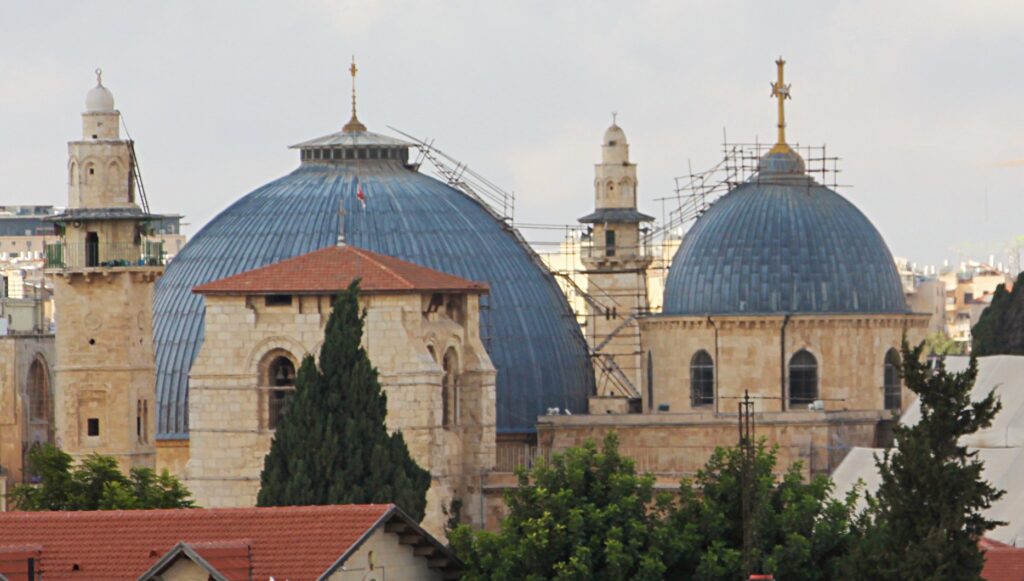
As we approach Easter it is only fitting to review the sites associated with the last week of Jesus’ life (Holy Week).
First I will discuss the Church of the Holy Sepulchre. Revered as the holiest site by all orthodox Christian religions (i.e. Roman Catholic, Greek Orthodox, Russian Orthodox, Coptic, Armenian Apostolic, Syriac, and Ethiopian Orthodox). The above photo shows the large dome over the tomb (called Edicule). In front of the large dome is the bell tower built by the Crusaders. The upper floor of the bell tower was destroyed in the 1545 earthquake. The smaller dome on the right is over the central chapel built by the Crusaders. The two minaret towers are not associated with the church, but mark the locations of mosques in front and behind the church.
During the time of Christ, this location was a disused stone quarry. After the destruction of Jerusalem in 70 AD, the entire city was a ruin. In 130 AD the Roman emperor Hadrian began building a new city which he named Aelia Capitolina. In 135 AD as part of the new city, Hadrian ordered the stone quarry filled in and leveled in order to build a temple to Zeus or Aphrodite (historical documents do not agree on which of the two). When Christianity became the official religion of the Roman Empire (from this point on called the Byzantine empire), emperor Constantine sent his mother, Helena, to search the holy land for relics and biblical sites.
In about 326 AD construction began on the Church of the Holy Sepulchre. First by removing the Roman temple, then by removing all of the dirt fill. This revealed tombs dug into the quarry. One was identified as the tomb of Jesus by the then Bishop of Jerusalem (named Macarius).
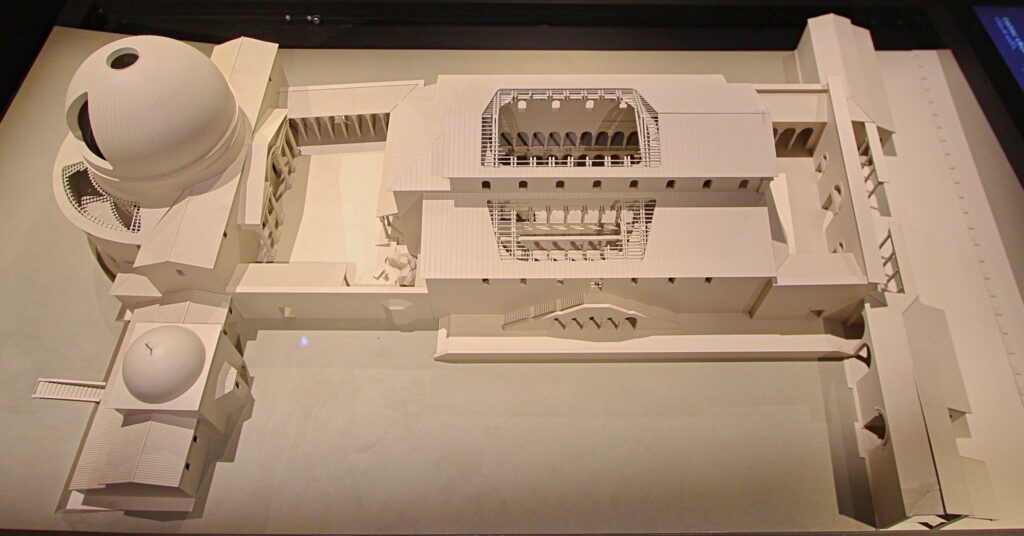
The above is how the original Byzantine church was laid out. This church was destroyed by fire when the Arab armies captured the city in 614 AD. Although the church was rebuilt, in 1009 AD it was leveled (including the tomb) by a fanatical Muslim ruler.
The destruction of the church became one of the reasons which began the Crusades (1099-1244 AD). The church was rebuilt and expanded under the Crusader kingdom of Jerusalem. The present church is what the Crusaders built, but with substantial repairs over the centuries.

The above is the main entrance to the church. The courtyard is called the Pavis. On the left is the base of the Crusader bell tower. Six different Christian churches each control a section of the church. All 6 must agree on even the slightest change (called the Status Quo). To symbolize this you will notice a ladder below one of the central windows. Many years ago (1728 AD) a worker left it there. It is now called the immovable ladder to symbolize that all 6 religions must agree before any changes can occur. Changes now basically only occur when the Israeli government forces safety improvements. And there have been recent safety enforcements ( you will see evidence of this in some of my photos such as above).

Immediately inside the entrance and up a staircase on the right takes you to the chapel of Calvary (Golgotha) built on top of a large rock pillar in the quarry. The crest of the rock is under the bottom left glass case.
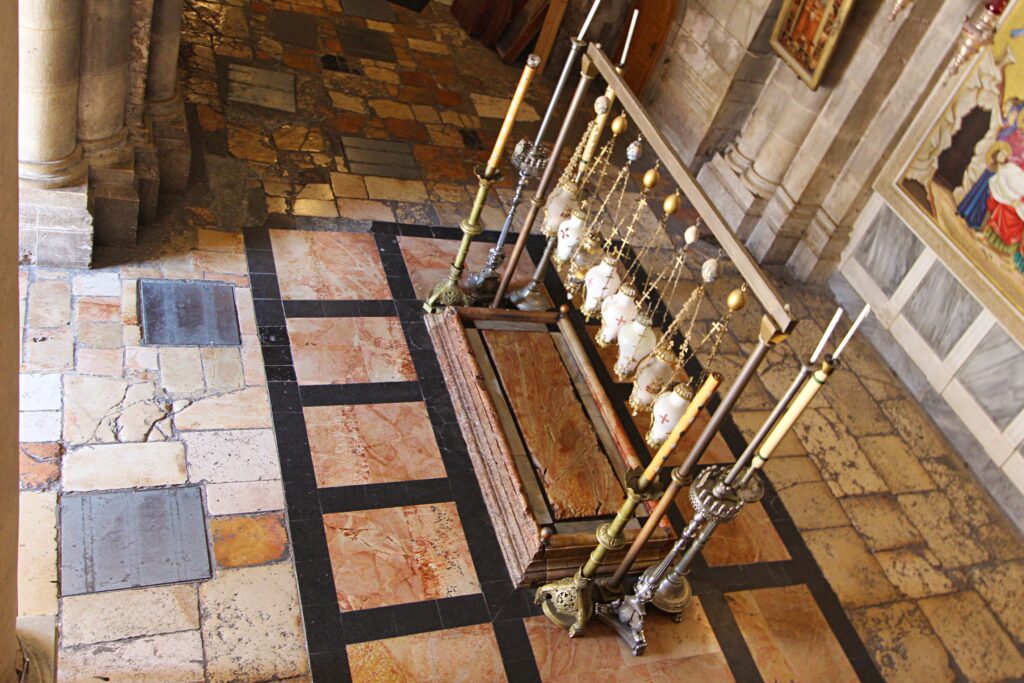
Directly inside the entrance is the Stone of Anointing. Here tradition says the Lord’s body was laid and anointed for burial. Under the floor on the sides of this hallway, 8 Crusader kings of Jerusalem were buried. Their weathered tomb markers disappeared during renovations. in 1808. The photo was taken from the Calvary chapel.

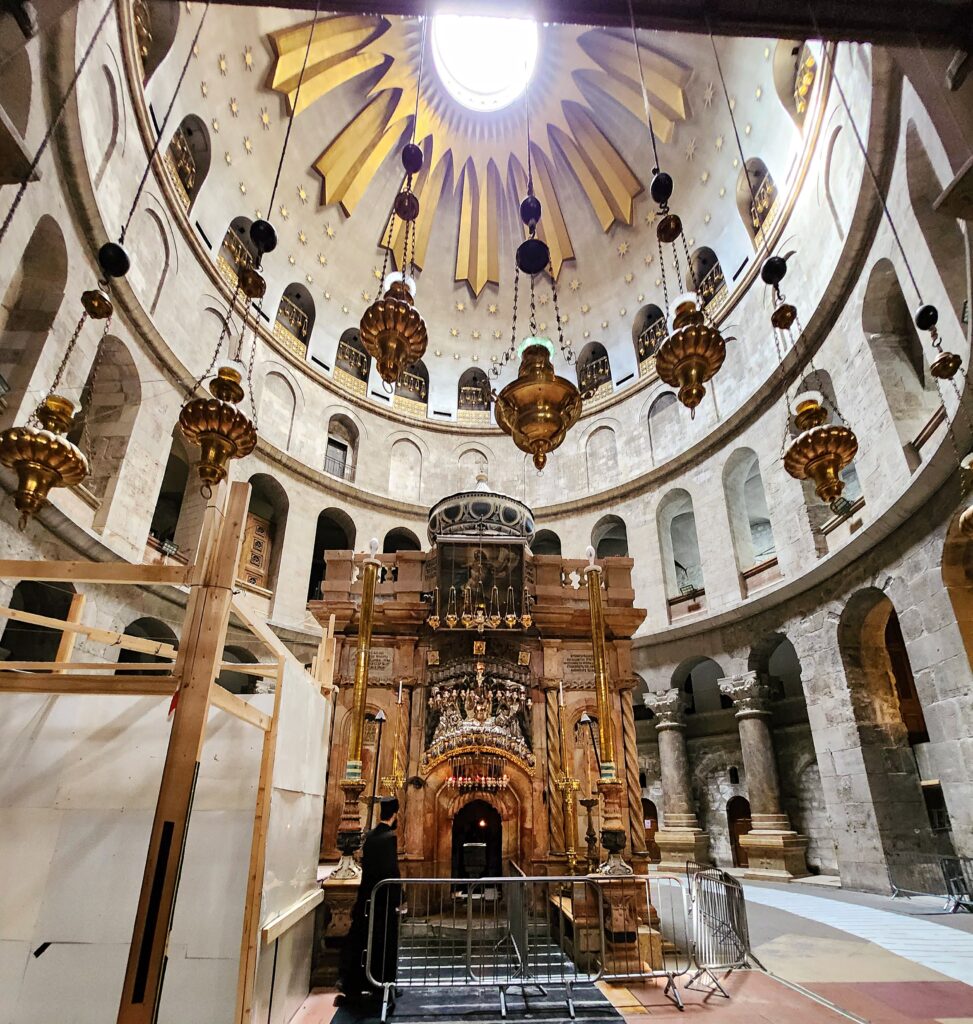
When the original tomb was discovered, the Byzantines demolished the rock around it leaving only the tomb enclosed by thin exterior rock walls. This structure is known as the Edicule. The Crusaders encrusted the exterior walls with marble. Normally there is a long line of pilgrims waiting to enter. I was here after 7 October 2023 and as you see there were no tourists.

Behind the Edicule are two 1st century era tombs. They are known as the Tombs of Joseph of Arimathea and Nicodemus.
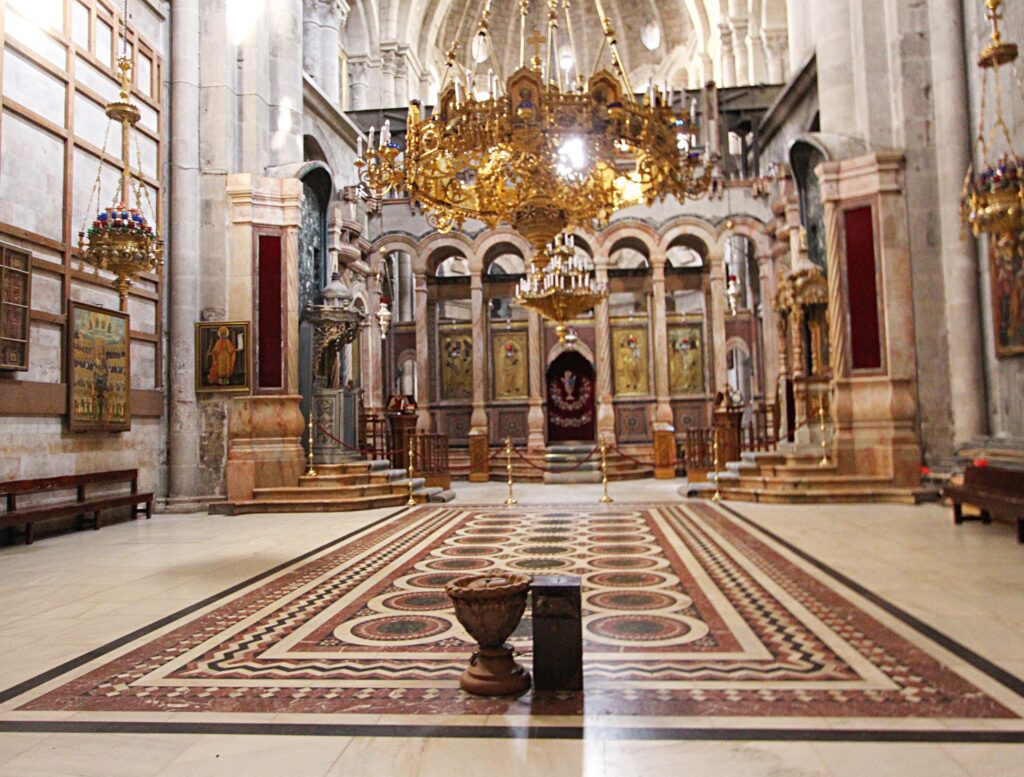
Across from the door to the Edicule is the central chapel (under the small dome).
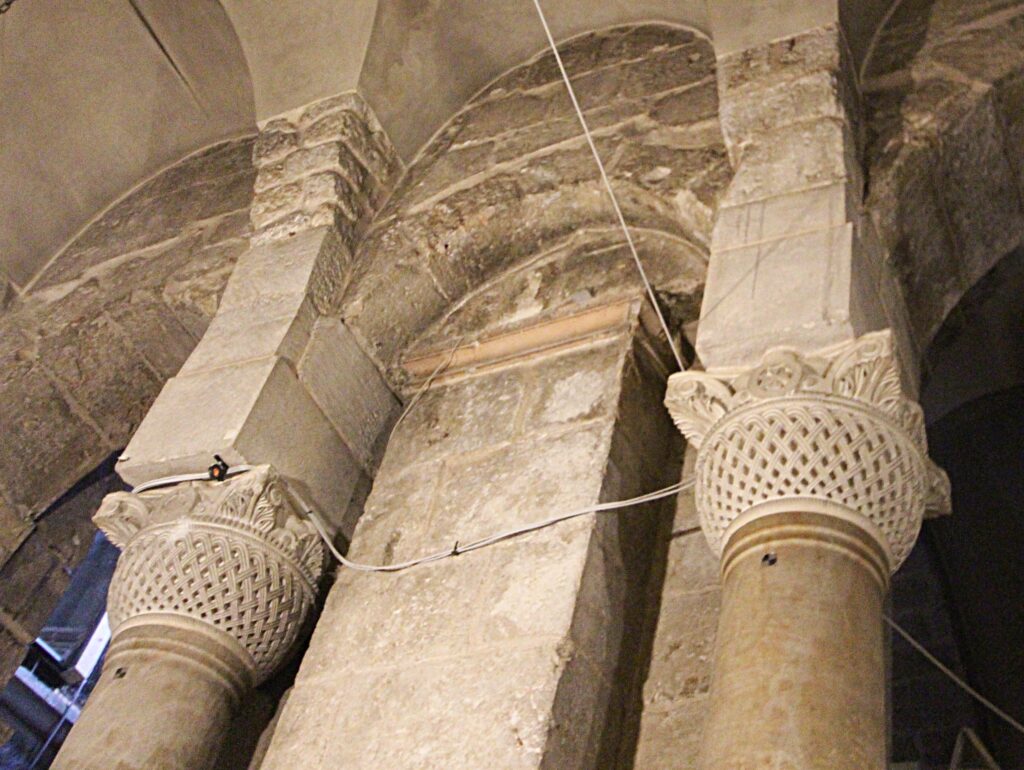
Above are two reused capitals from the original Byzantine church (335-614 AD).
< Previous post on The Pool of Bethesda at Jerusalem
Next post on Garden of Gethsemane >
Return to Homepage
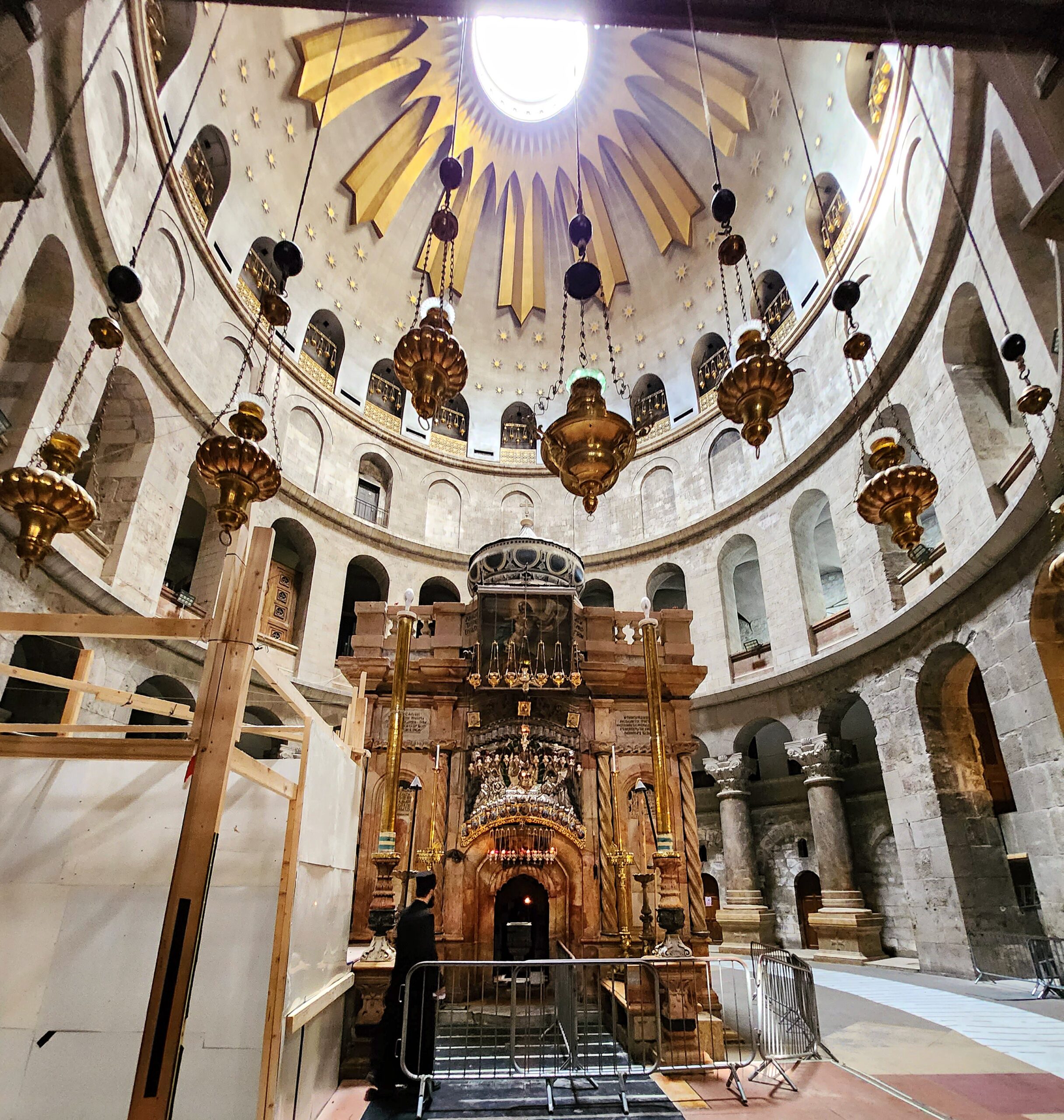
3 responses to “Church of the Holy Sepulchre in Jerusalem”
this episode is fascinating. The chapel insides are breathtaking. Hard to believe that the ancients could build something so beautiful. So amazing that the remains are still present aftr wars, etc. Many thanks.
I found this a very claustrophobic place. I don’t remember much about the various parts being too distracted by the, to me, rather strange behaviour of others. I don’t remember a long line of pilgrims, but it was very busy with tourists! Thank you for the interesting history which I entirely missed.
Liz, you are welcome. I personally do not believe this is the correct place. But I respect those who do. I have never felt the spirit there.